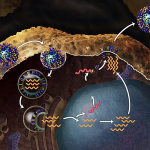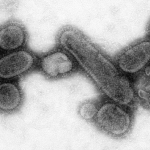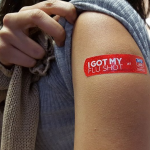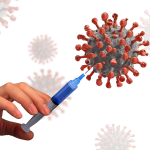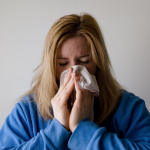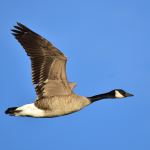In this radio conversation, John Batchelor and I discuss the effectiveness of vaccines and the challenges posed by new variants of SARS-CoV-2 (the virus that causes COVID-19) such as the now-dominant JN.1.
influenza
The level of respiratory illnesses in the U.S. is high and increasing. We are again experiencing a "tripledemic" of COVID-19, flu, and respiratory syncytial virus (RSV). As the peak incidence of those infections approaches, we should be vigilant and take appropriate precautions.
Winter is here, which means a barrage of pathogens is patiently waiting to make our lives miserable. Influenza, colds, and the "stomach bug" are the top three nasties likely to get you, but can you prevent this by washing your hands or using an alcohol-based disinfectant? Or maybe neither?
The inconvenience of yearly flu shots prevents many people from getting them, while flu kills thousands of Americans annually. We need vaccines that will provide durable immunity and work against new variants. There is progress.
The process of selecting viruses for the yearly flu vaccines is complex and inexact. For the 2023-2024 flu season, there is reason to be optimistic that the vaccines will provide good protection.
Although COVID-19 is giving us a temporary respite, influenza in humans and animals remains a serious threat. Its deadly H5N1 strain is spreading geographically and in more species of mammals, making the emergence of a pandemic strain more likely. We need to prepare.
COVID is still killing more than 1,000 Americans a week; long COVID causes prolonged misery; and a new, more transmissible subvariant of the SARS-CoV-2 virus is spreading.
Dr. Fauci, speaking on vaccinations: “Past unsuccessful attempts to elicit solid protection against mucosal respiratory viruses [COVID-19] and to control the deadly outbreaks and pandemics they cause," he said, "have been a scientific and public health failure that must be urgently addressed.” That's a lot to unpack.
You can’t miss the headlines. As we enter the fall, we now face the combined forces of influenza, COVID, and RSV – respiratory syncytial virus. Are the continued drumbeats of fear necessary?
As Omicron continues to infect its way across America, let us not forget its viral companion: influenza. How is that working out?
As another wave of infections washes across the land, and officials call for or against the non-pharmacologic interventions (NPI) a new battle is being waged. Do these interventions work? Where is the science to follow? Let’s ignore your favorite expert or talking head; I’ll report, you decide.
Reports of an H5N8 influenza virus spreading among birds across the globe understandably have generated concern. However, H5 viruses do not pose a direct threat to the health of the vast majority of humans on the planet, at least not yet.

